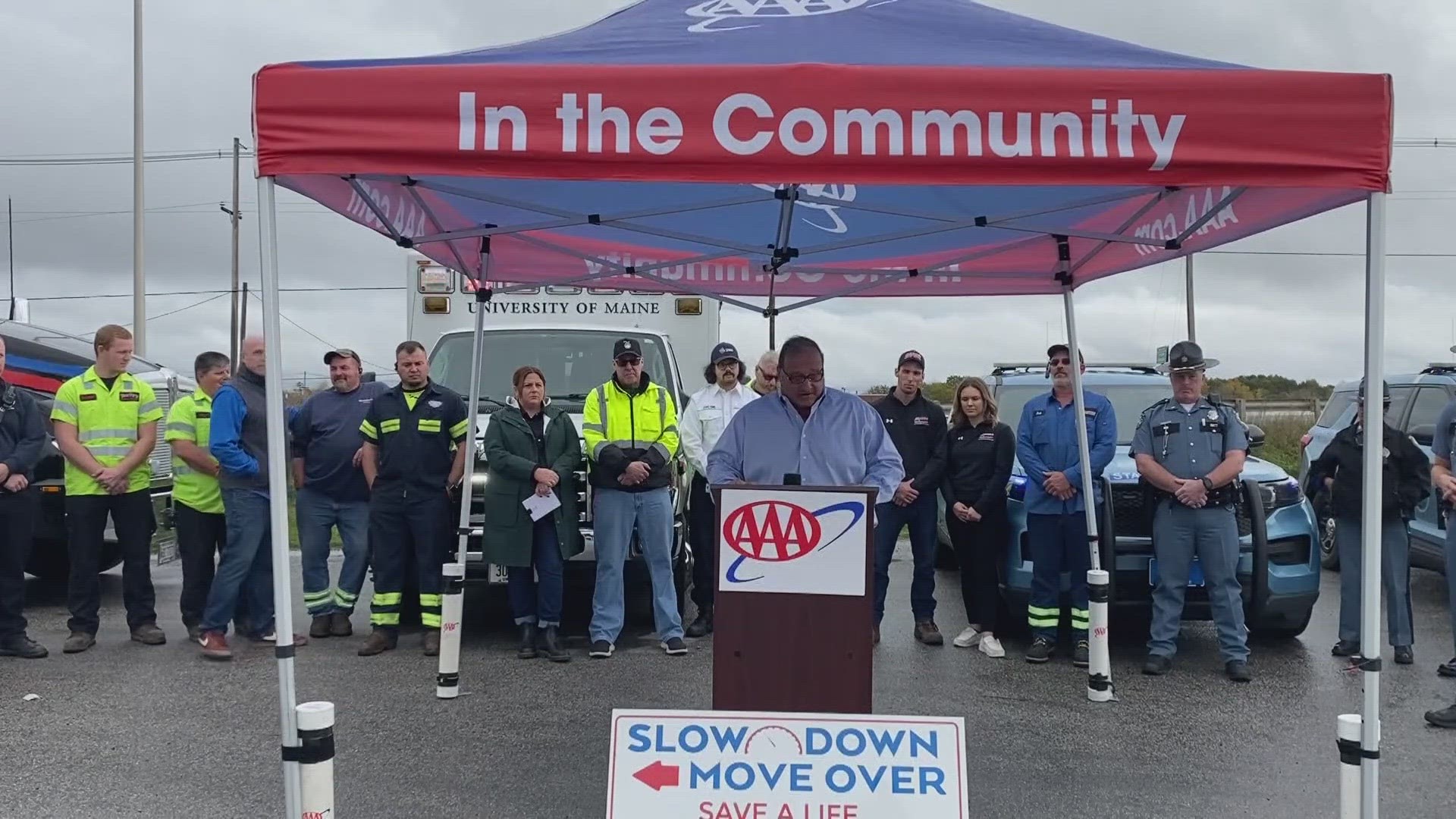HERMON, Maine — Maine Senator Joe Baldacci joined Maine State Police, leaders from AAA Northern New England, and others for a press conference on Saturday at Dystart's in Hermon, to discuss a new law that requires all drivers to move over for any car that looks to be disabled roadside.
The bipartisan law is an enhancement of the active slow-down and move-over law, broadening the language to make the law applicable to all roadside vehicles, rather than just first responder and emergency vehicles.
The law will take effect on Oct. 25.
According to AAA, an average of 60 emergency responders—including tow truck providers—are hit and killed in the U.S. each year by vehicles while working roadside.
AAA also reported that nearly one person is struck and killed each day in the U.S. while waiting roadside with their disabled vehicle.
Tow truck provider and Director of Towing and Recovery Association of Maine Mike Nadeau said the list goes on.
"A tow truck driver in the United States gets killed once every six days," Nadeau said. "That’s quite a high number in my book."
Baldacci said he believes that given the risk police, first responders, and emergency roadside assistance crews face daily as they help people who are in distress on the side of the road, the new legislation is necessary.
"I think we all recognize this potential danger," Baldacci said. "This preventable danger."
Lieutenant of Maine State Police Michael Johnston said too often drivers fail to move over and give various emergency teams room to work.
"We have had troopers that have been struck when they’ve been on a traffic stop or at the scene of a motor vehicle crash," Johnston said.
Johnston said he has been in the field for 22 years, and working to help people who need roadside aid or even to protect the safety of others on the highway has not been an easy job.
"Being out there is the most dangerous thing we do," Johnston said. "I can count the near misses where I’ve almost been hit, or a car has buzzed me, or there have just been inches between them hitting me."
AAA Northern New England's Director of Public Affairs Pat Moody said "near misses" happen more than they should.
In March of this year, a pickup truck carrying a small utility trailer while driving 70 mph launched off of a ramp and barreled down the road after swiping a tow truck and a provider who was roadside helping a customer, Moody said.
Luckily no one was killed in the crash, Moody said, but he said the crash could've been avoided.
"If he was just a foot to the right, he would’ve hit the tow truck provider. He would’ve potentially taken the top of the cab of the tow truck off where the member was sitting, figuring that they were safe," Moody said. "But—if he reversed that, went back basically 100 yards, recognized that situation ahead, and moved over probably eight inches to a foot, he wouldn’t have had that crash."
Moody said getting calls saying someone on his team has been hurt or killed while working is heart-wrenching.
"Most people don’t realize how dangerous it is when they’re passing by at highway speeds. They don’t flick that switch," Moody said. "They don’t recognize the situation, and they don’t adjust their driving style to accommodate for that added risk."
The University of Maine Volunteer Ambulance Corps has a new HAAS alert system that informs drivers who are using navigation apps when a responding ambulance is nearby, instructing them to slow down and move over.
"We’re here for your safety so we need to make sure that we are safe as well," UVAC student John Kahle said.
Kahle said UComm Technologies donated the new technology to UMaine in April. He said it has been helpful in the field because it lets drivers be more aware when ambulance emergency response vehicles are close by.
Moody said he appreciates the new alert system, and it's a step in the right direction. He said he is also proud of the work Baldacci and AAA Northern New England completed to enact the new legislation.
Maine put a hands-free while driving law in place in 2019. Moody said it partners well with the new slow-down and move-over law.
He said there is still room for future laws to further limit the use of voice-activated devices for drivers, addressing the cognitive attention that drivers lose while interacting with voice-activated technology.
Moody said overall, even with new laws, drivers have to do their part.
"It’s really about drivers taking personal responsibility behind the wheel," Moody said.
Johnston drivers can do simple things to keep emergency teams, people waiting roadside, other drivers on the road, and even themselves safe.
"Follow the law. Just follow the law and be alert and be aware," Johnston said.

